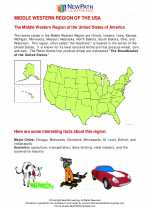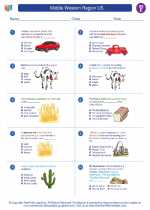Formal Regions
Formal regions, also known as uniform or homogeneous regions, are areas defined by a common characteristic, such as language, political boundaries, climate, or physical features. These regions are usually identified by official boundaries and are often used for administrative, political, or economic purposes. Understanding formal regions helps us comprehend the geographical, cultural, and political diversity of the world.
Characteristics of Formal Regions
Formal regions are identified by specific, measurable criteria that can be used to define their boundaries. Some common characteristics used to define formal regions include:
Examples of Formal Regions
Several examples of formal regions include:
- The United States: Defined by political boundaries and legal jurisdictions.
- The Sahara Desert: Defined by its arid climate and geographical boundaries.
- The Amazon Rainforest: Defined by its unique ecosystem and geographical boundaries.
- The Arabic-speaking countries: Defined by the common language and cultural characteristics.
Study Guide
To study formal regions effectively, consider the following:
- Understand the criteria used to define formal regions.
- Identify and analyze examples of formal regions based on different characteristics.
- Compare and contrast various formal regions to understand their similarities and differences.
- Examine the impact of formal regions on human activities, such as trade, migration, and cultural interactions.
- Explore the historical and cultural significance of formal regions in shaping the world's geography and societies.
By studying formal regions, you can gain a deeper understanding of the diverse ways in which people, landscapes, and cultures are interconnected and influenced by specific characteristics and boundaries.
.◂Social Studies Worksheets and Study Guides Fifth Grade. Middle Western Region US

 Worksheet/Answer key
Worksheet/Answer key
 Worksheet/Answer key
Worksheet/Answer key
 Worksheet/Answer key
Worksheet/Answer key
